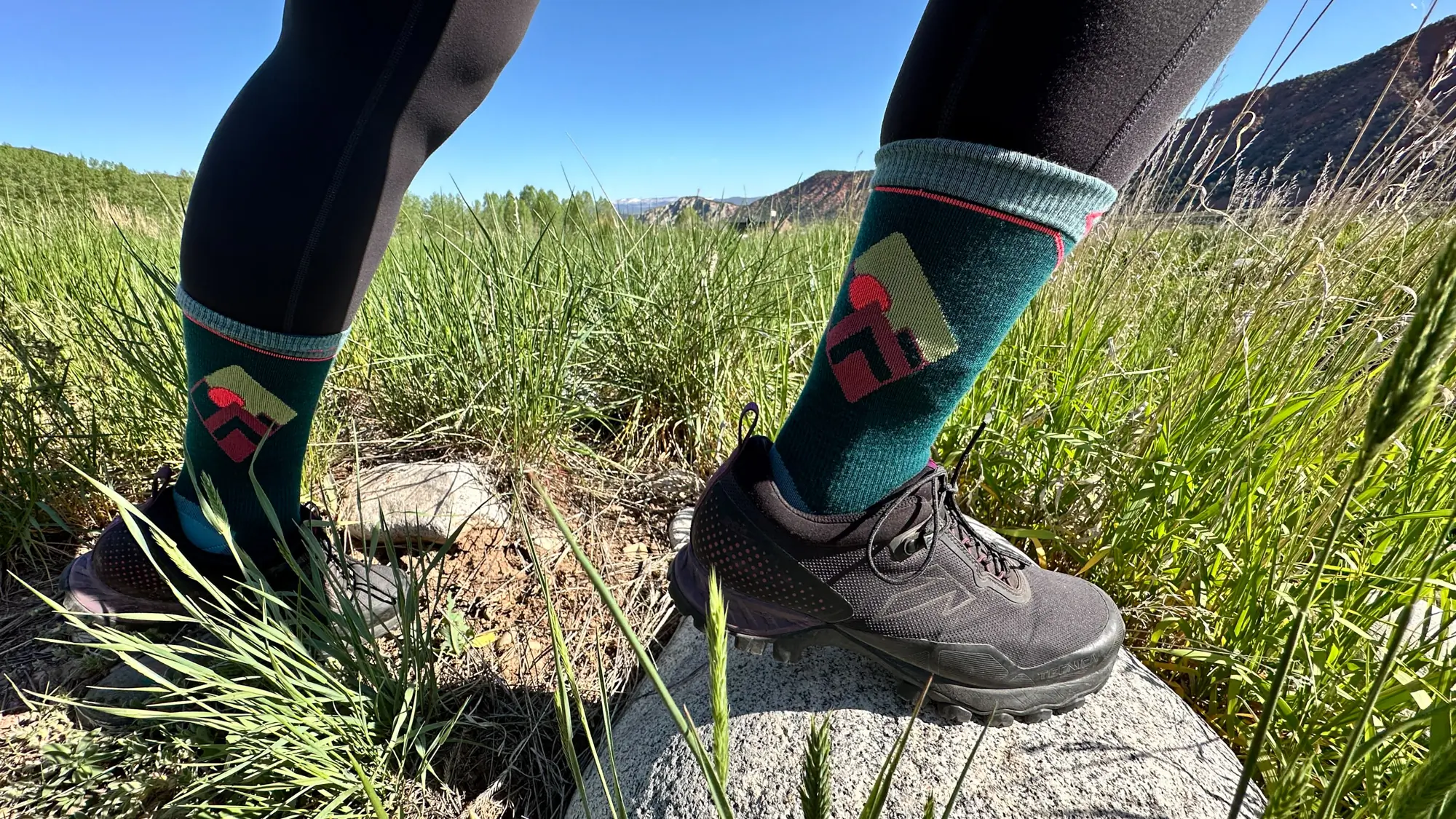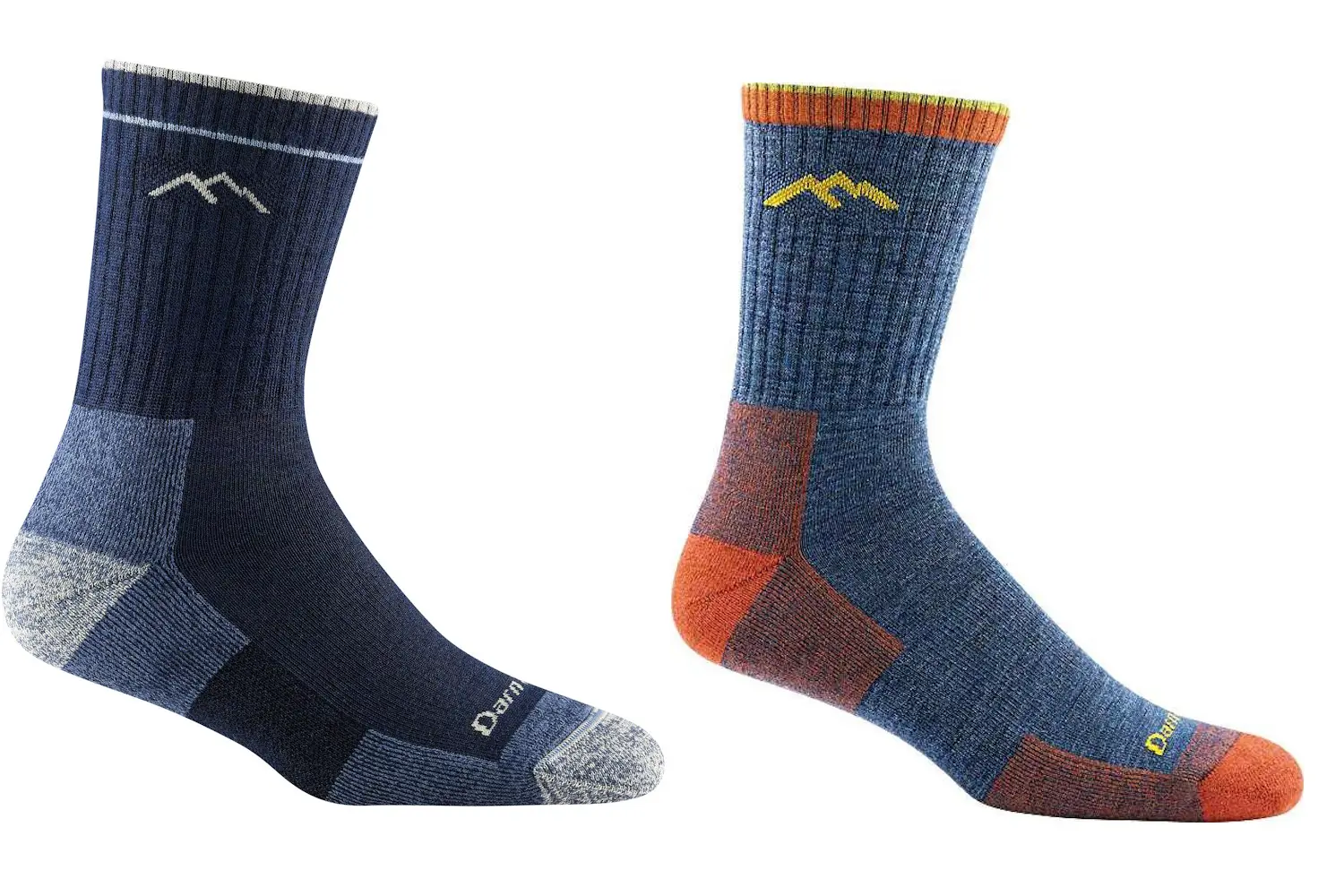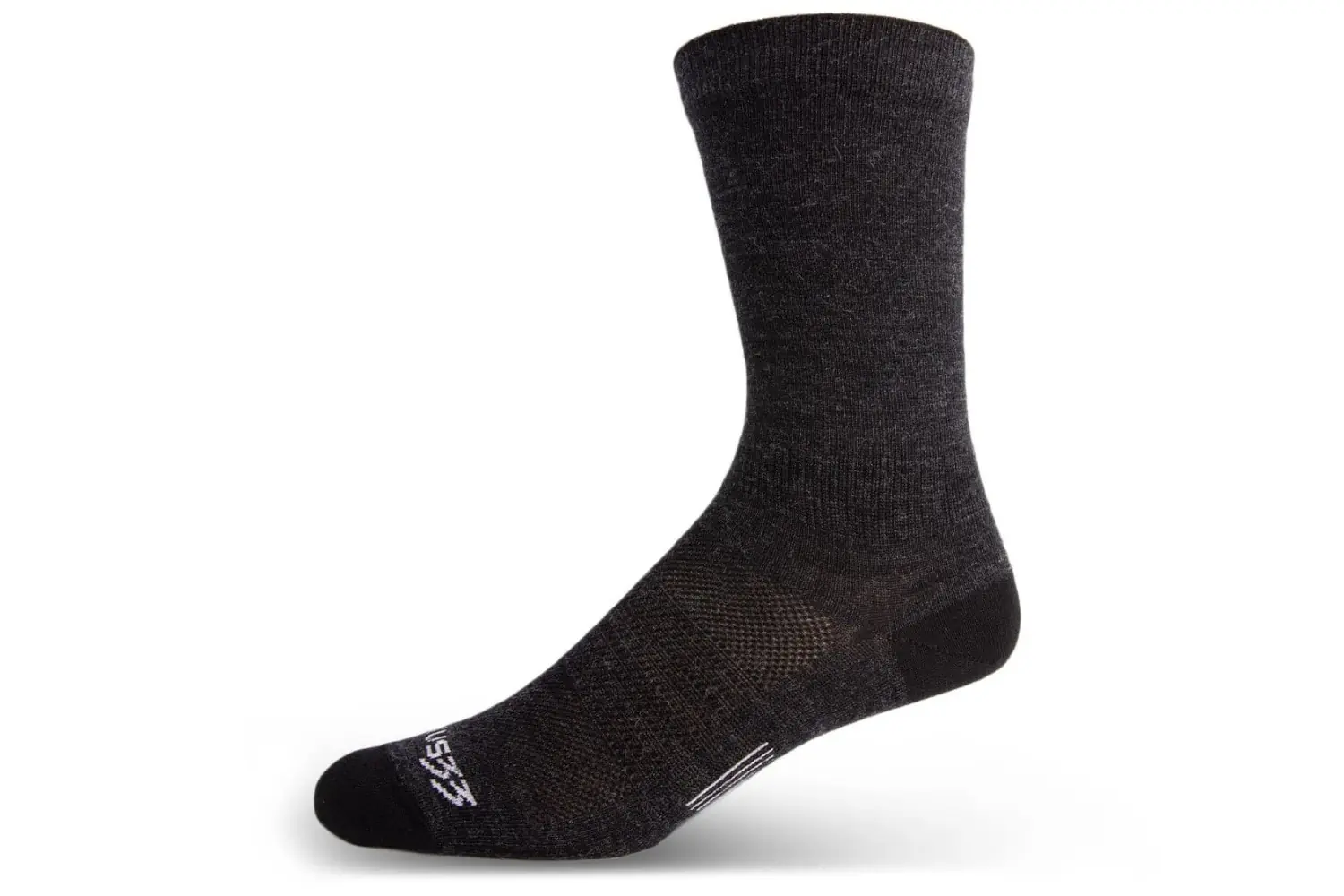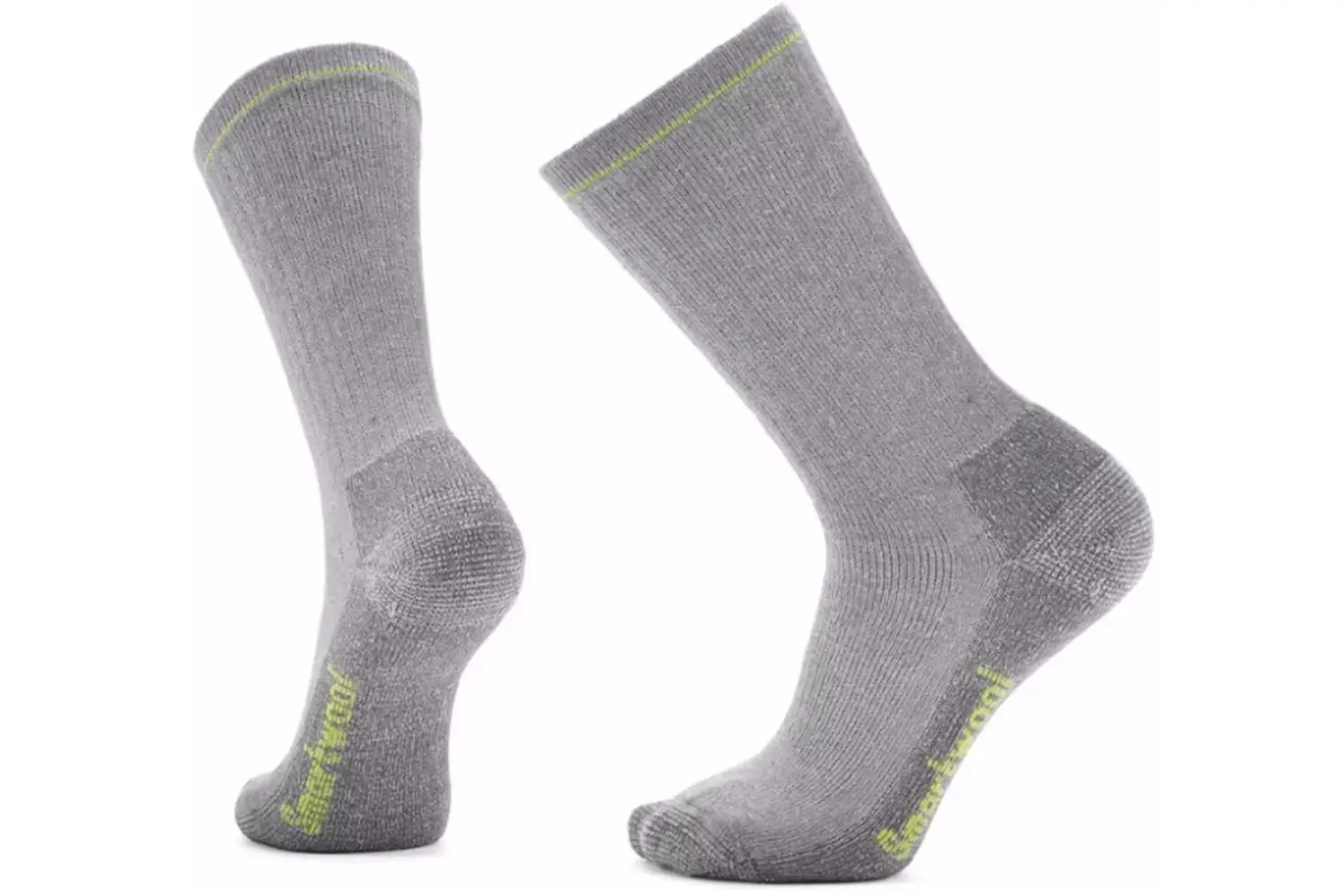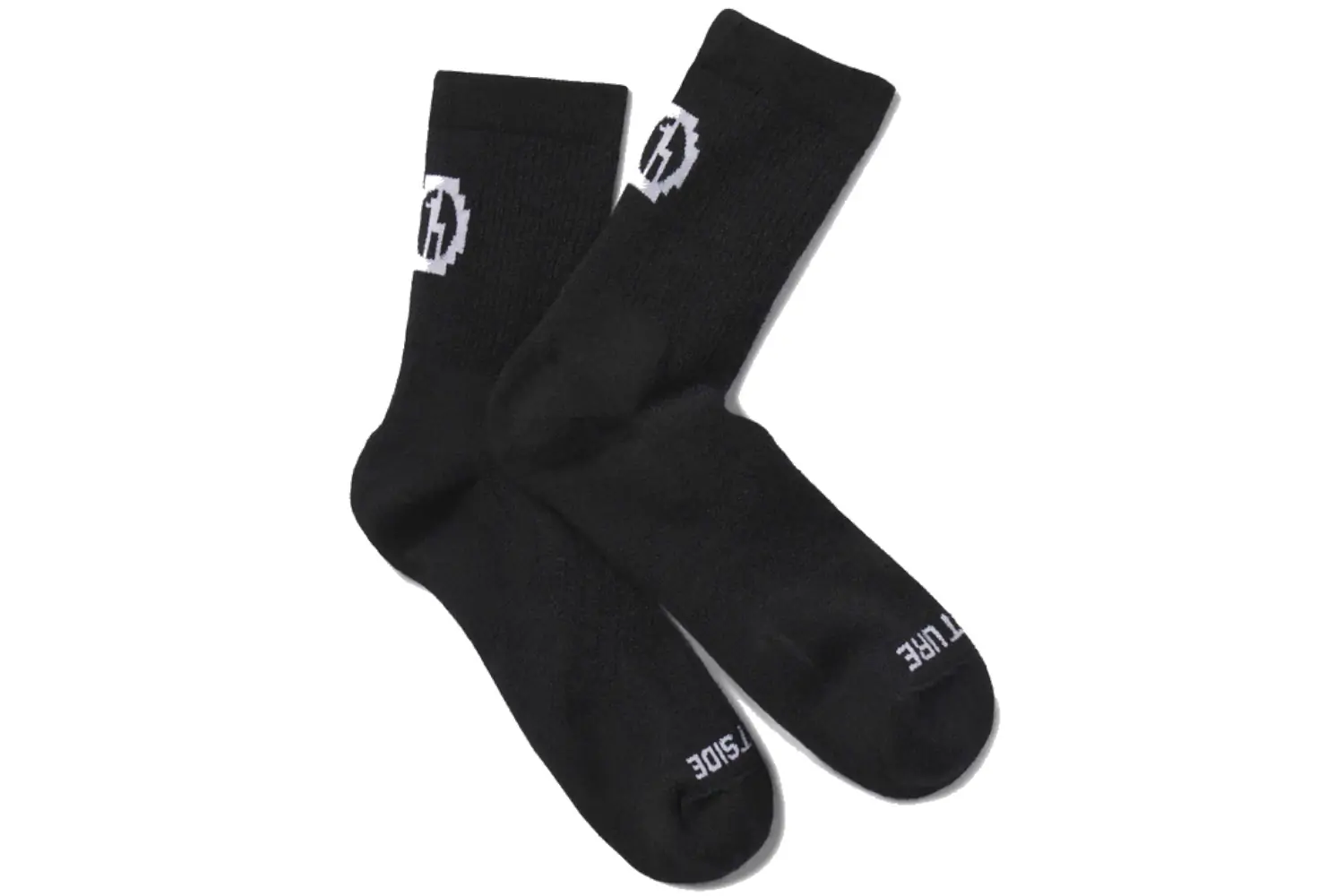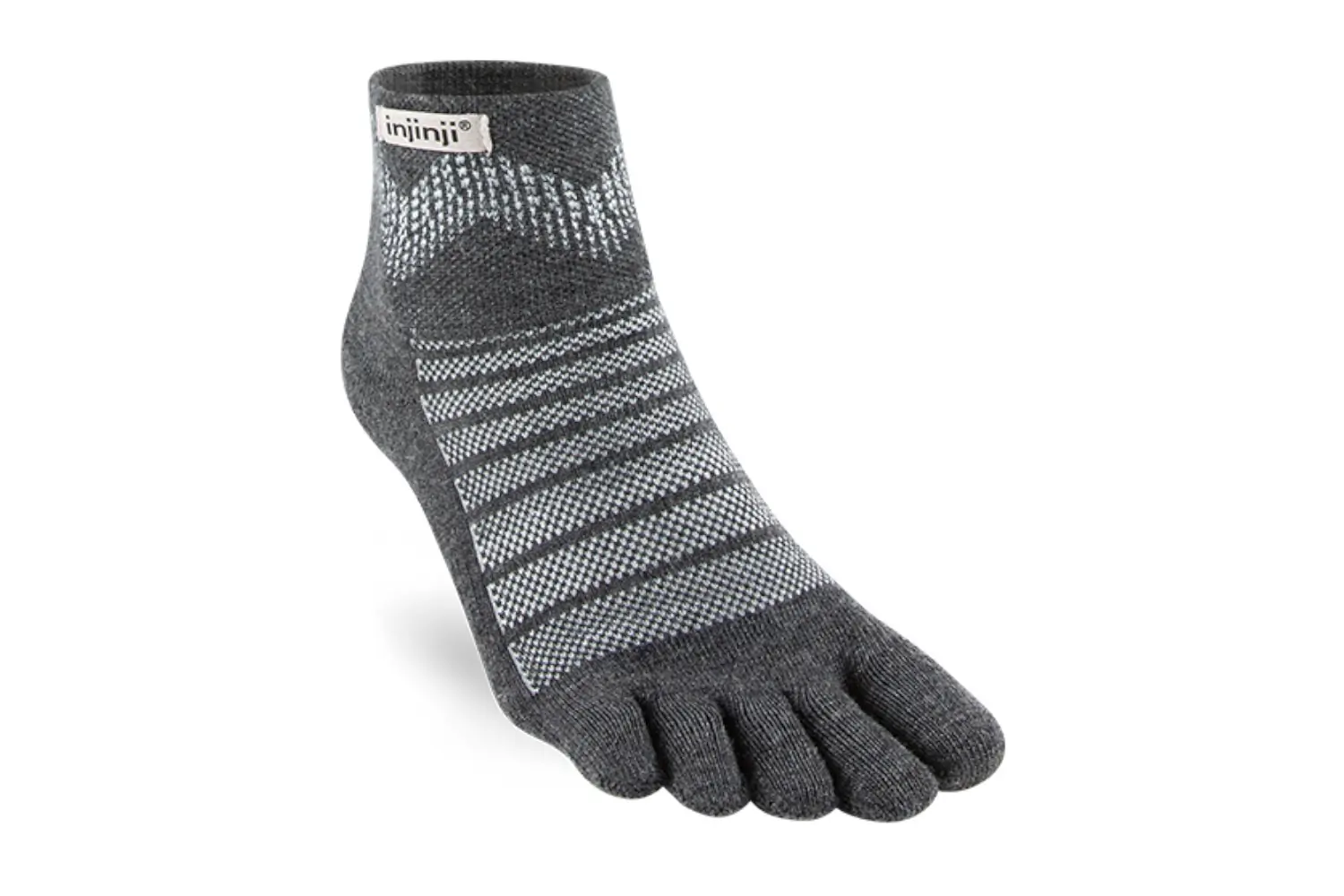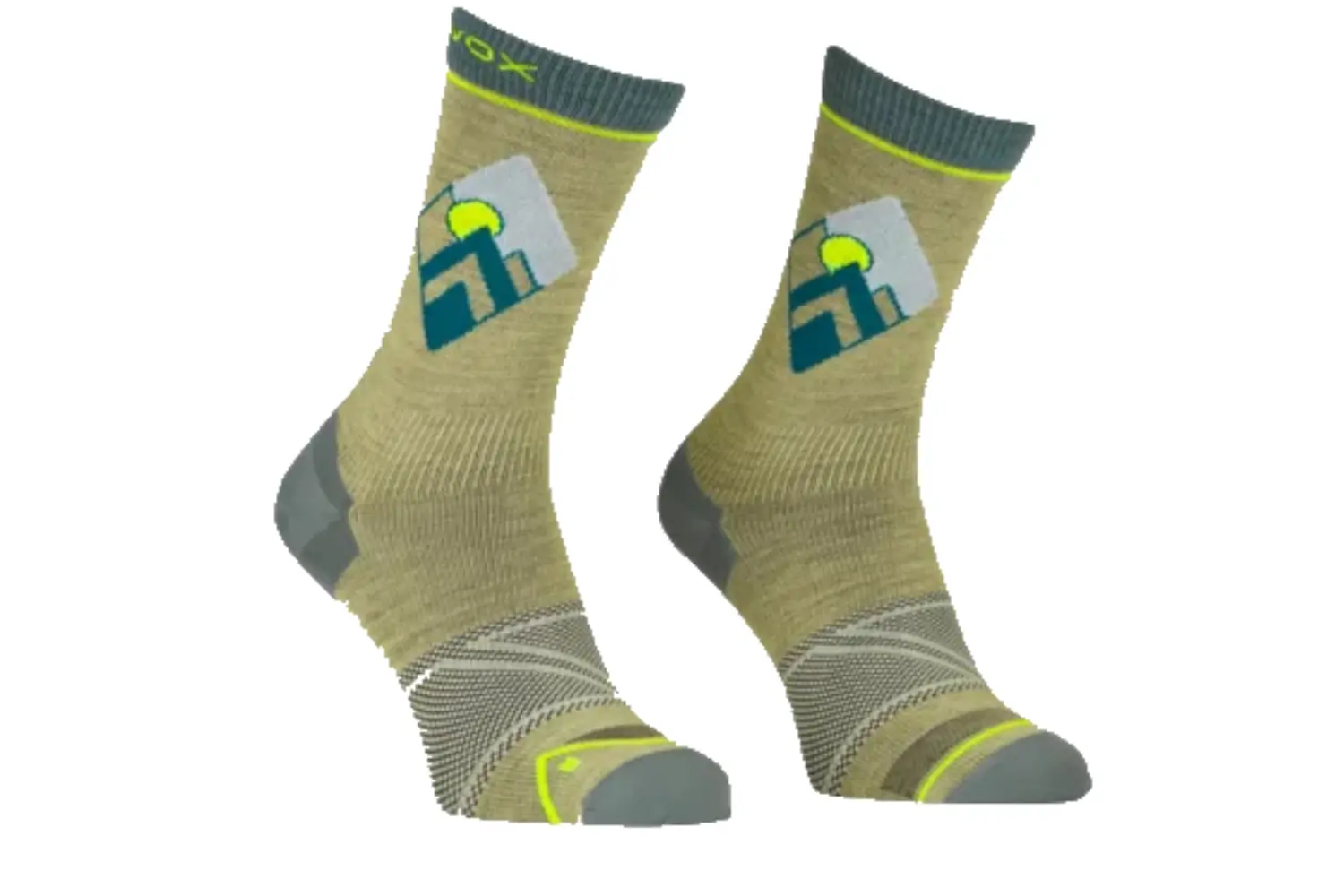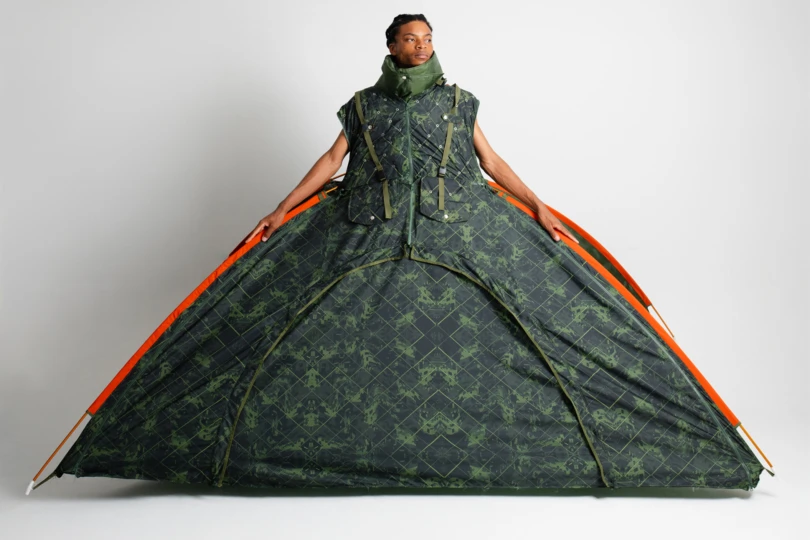Not all socks are created equal. Wool socks are especially known for their technical prowess since they wick sweat away from your feet, regulate temperature, and resist odor — an especially important job in the dark, dank abyss that is your moist shoe.
And, spoiler alert: wool doesn’t mean those socks are only meant for cold weather. Thanks to a variety of weaves and weights, you can wear wool socks trekking through the desert beneath a high noon sun (although we may question your life choices).
Still, there are literally thousands of wool socks out there so it’s tough to decide which is the best for you. We spend countless hours hiking, skiing, running and biking outside every year, so we brought a bunch of socks along for the ride. From slushy trails to desert sandstone and powdery steeps, we put these socks to the test. We bring you our favorites.
Scroll through our picks for the best wool socks of the season, and be sure to check out our comprehensive Buyer’s Guide, Comparison Table, and Price & Value section.
Editor’s Note: For our November 5, 2024 update, we added a Price & Value section to our Buyer’s Guide.
The Best Wool Socks of 2024
Darn Tough Hiker Micro Crew Midweight
- Material: 59% merino wool/39% nylon/2% Lycra Spandex
- Height: Micro Crew
- Cushion: Medium
- Available sizes: S-L
Pros
- Made in the USA
- Lifetime warranty is tough to beat
- Secure fit doesn’t bunch or wrinkle
Cons
- Wool always costs more than synthetic socks
Minus33 Boot Liner
- Material: 61% merino wool/20% stretch nylon/18% nylon/1% spandex
- Height: Mid-Calf
- Cushion: No cushion
- Available sizes: S-XL
Pros
- Solid two-year warranty with registration
- Versatile fit on its own or as a liner beneath warmer socks
- Most affordable sock in this test
Cons
- Taller height may awkwardly hit at the calves
Smartwool Hike Classic Edition Second Cut Crew Socks
- Material: 33% merino wool/33% mixed fibers/25% recycled nylon/8% nylon/1% elastane
- Height: Crew
- Cushion: Full Cushion
- Available sizes: S – XL
Pros
- Flat toe seam doesn’t chafe
- Warm during chilly treks
- Constructed with circular yarn derived from old socks
Cons
- Looser fit may not work for everyone
Paka Performance ¾ Crew Sock
- Material: 33% Baby Alpaca fiber/7% Tencel/57% recycled nylon/3% Spandex
- Height: ¾ length
- Cushion: Extended heel cushion
- Available sizes: Medium, large
Pros
- Versatile performance fit works for a variety of activities
- All Paka products are fully traceable
- Alpaca wool wicks sweat better than Merino
Cons
- Just as costly as Merino wool
Injinji Outdoor Midweight Mini-Crew Sock
- Material: 71% merino/26% nylon/3% lycra
- Height: Mini-crew
- Cushion: Midweight Cushion
- Available sizes: S-XL
Pros
- Higher percentage of wool compared to other socks
- Eliminates blisters between the toes
Cons
- Toe sleeves aren't for everyone
- Material: 46% polyamide/39% virgin wool/11% recycled polyamide/4% elastane
- Height: Mid-Calf
- Cushion: Heel and toe
- Available sizes: w’s 4-12; m’s 6-14
Pros
- Light compression feels good for performance
- Super breathable in warm weather
Cons
- Expensive
Wool Socks Comparison Chart
| Wool Socks | Material | Height | Cushion | Available Sizes |
|---|---|---|---|---|
| Darn Tough Hiker Micro Crew Midweight | 59% merino wool/39% nylon/2% Lycra Spandex | Micro Crew | Medium | S-L |
| Minus33 Boot Liner | 61% merino wool/20% stretch nylon/18% nylon/1% spandex | Mid-Calf | No cushion | S-XL |
| Smartwool Hike Classic Edition Second Cut | 33% merino wool/33% mixed fibers/25% recycled nylon/8% nylon/1% elastane | Crew | Full Cushion | S – XL |
| Paka Performance ¾ Crew Sock | 33% Baby Alpaca fiber/7% Tencel/57% recycled nylon/3% Spandex | ¾ length | Extended heel cushion | Medium-Large |
| Injinji Outdoor Midweight Mini-Crew Sock | 71% merino/26% nylon/3% Lycra | Mini-crew | Midweight Cushion | S-XL |
| Ortovox Alpine Light Comp Mid | 46% polyamide/39% virgin wool/11% recycled polyamide/4% elastane | Mid-Calf | Heel and toe | W’s 4-12; M’s 6-14 |
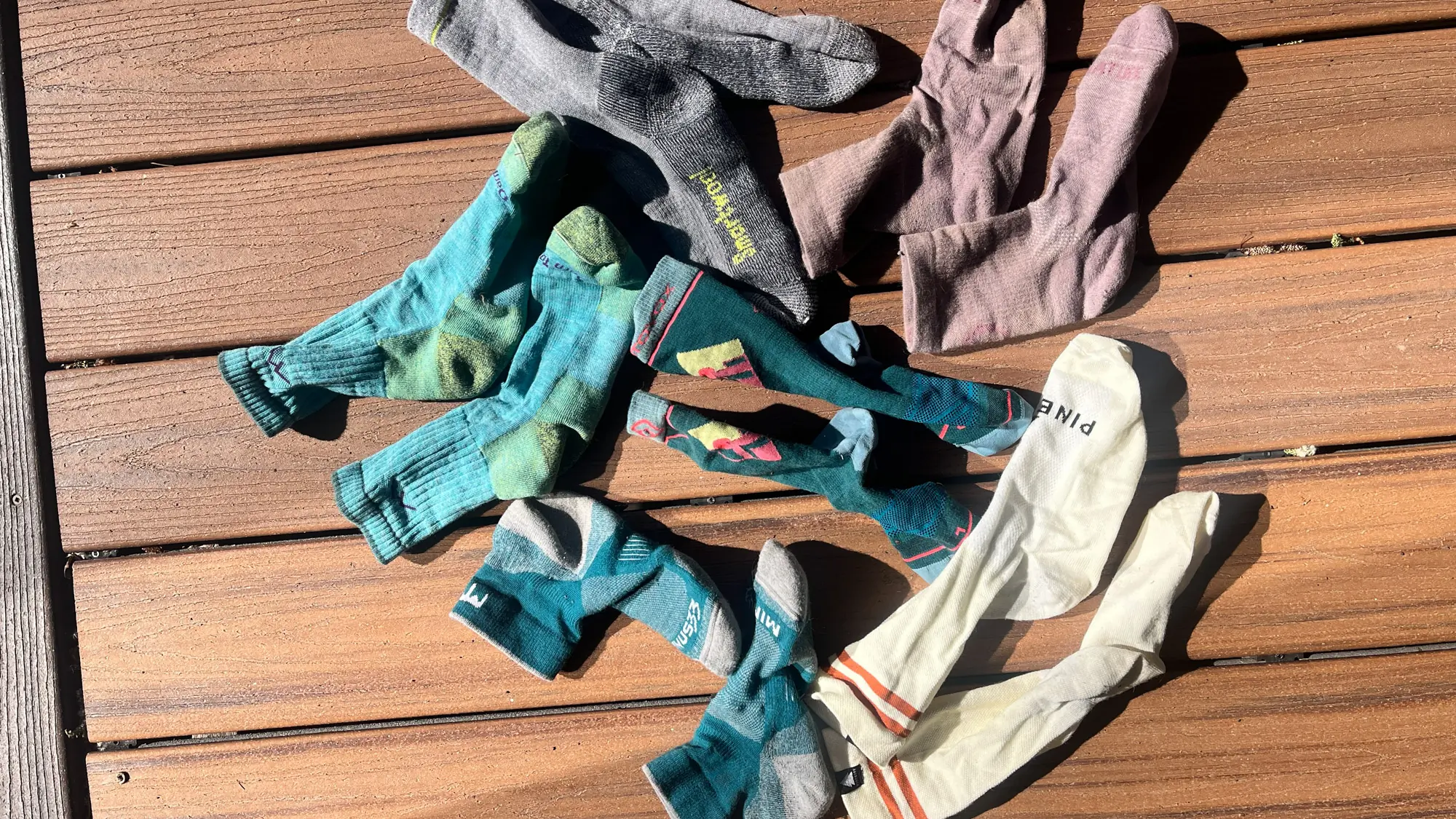
How We Tested the Best Wool Socks
Our Expert Tester
Based in Carbondale, Colorado, lead tester Heather Balogh Rochfort is a lifelong outdoor recreationalist with nearly 15 years of gear-reviewing experience as a journalist and author of five books. She considers herself a jack-of-all-trades as she isn’t particularly good at any one sport but enjoys them all, including trail running, hiking, backpacking, camping, mountain biking, skiing, bikepacking, paddling, and more.
She logs more than 50 days skiing each season and at least another 30-40 days spent sleeping under the stars. Balogh Rochfort once tried counting how many human-powered miles she earned yearly, but she quickly gave up — it was a lot.
Our Testing Process
In addition to extensive research and knowledge, we wore these socks on everything we did over the course of a few months. We wore wool socks while hiking, mountain biking, trail running, camping, alpine touring, and even while lifting weights.
We even turned them into our daily drivers while working and managing school drop offs, if only so we could evaluate their durability and stench resistance over time. Truly, there isn’t a weather condition these socks haven’t seen after concluding our testing process.
For this guide, we first looked at an essential component in these socks: wool. While most of the socks use merino wool, we also considered Alpaca wool as well. From there, we looked at a number of factors, including overall quality, value, design, comfort, quantity of wool, wicking capabilities, and durability.
Since most of these socks were only tested for a few months, we consider longevity with an asterisk since all socks should last longer than that. In those circumstances, we considered brand warranty programs, as well.
Lastly, we considered style. Socks aren’t something that typically top the fashion lists, but it’s nice when they look good and especially nice when they can be worn for a variety of activities. We also considered factors like the sock’s cut since that plays into style preferences.
Buyer’s Guide: How to Choose the Best Wool Socks
Fortunately, choosing the best wool socks for you is a simple task. However, there are a few factors to take into consideration.
Type of Wool
Most of the socks in this guide (like the Darn Tough Hiker Micro Crew Midweight or the Minus33 Boot Liner) use Merino wool. This is a type of wool derived from sheep and is arguably the most common wool used — for good reason.
Merino wool fibers are semi-hollow, which means warm air gets trapped inside and helps retain heat. On the flipside, this semi-hollow structure can hold moisture — like your sweat — which draws it away from your skin. This leaves the sock itself dry, your foot dry, and everyone generally happy.
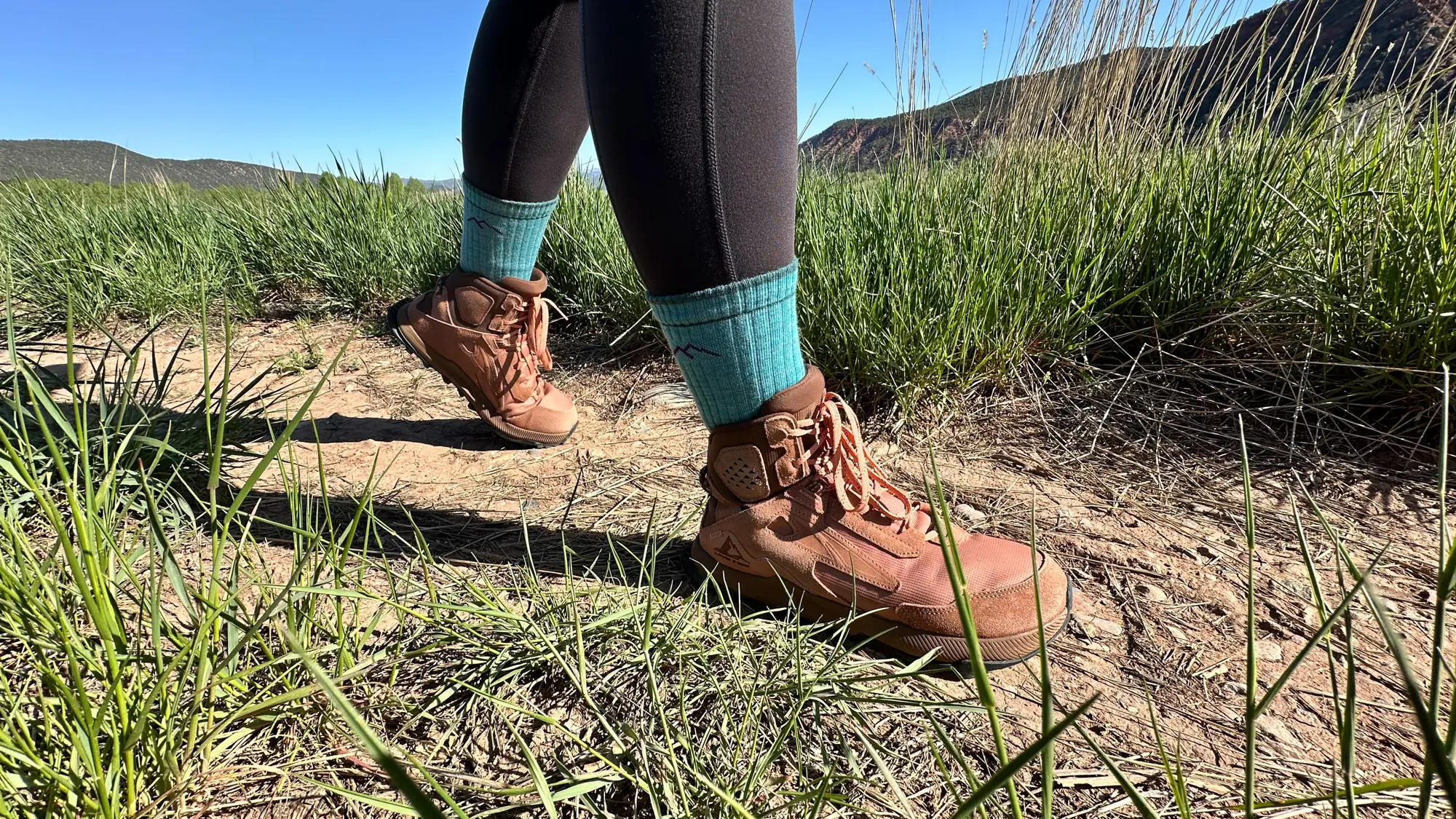



However, merino wool isn’t the only type of wool out there. We also have the Paka Performance ¾ Crew Sock that is constructed with Alpaca wool. Many argue that Alpaca wool is a superior choice to merino since the fibers are generally smoother so it’s less itchy.
Alpaca wool also has a higher tensile strength than merino and Alpacas are considered to be efficient grazers. They only eat the part of the plant they need and leave the rest compared to sheep that mow on the whole thing, leading to overgrazing and soil degradation.
For the sake of socks, both types of wool will be great — it’s a matter of preference.
Looking for socks for specific activities? Check out some of our sock roundups, including Best Hiking Socks and Best Running Socks.
Quantity of Wool
You’ll quickly notice that while wool is the majority ingredient in all of these socks, it is not the only fiber. That is because wool socks need synthetic fibers (often nylon) to add stretchiness and durability. However, the quantity of wool dramatically varies. For example, the Injinji Outdoor Midweight Mini-Crew socks have 71% merino wool, while the Ortovox Alpine Light Comp Mid only has 39% virgin wool.
Pro tip: Keep an eye out for a wool sock that has less than 30% wool. While that isn’t generally a bad thing, those socks won’t likely have the classic “wool benefits” like odor resistance and may perform more like a traditional synthetic sock.
Comfort
Once you get beyond the technicalities, comfort is the top consideration. If the sock isn’t comfortable, you won’t wear it. For many outdoor enthusiasts, comfort is a matter of preference. For some, heavily cushioned socks like the Smartwool Hike Classic Edition Second Cut Crew socks feel better underfoot thanks to all the padding. But for others, thinner liner-type socks like the Minus33 Boot Liners are more comfortable since they are less apt to bunch or wrinkle.
The cut of the sock is also a factor to consider for performance. Mini-crew cuts typically end just at your ankle bone, so they keep grit out but sit lower than a full crew or calf-length sock. However, some people prefer taller socks like the Darn Tough Hiker Micro Crew Midweight sock that sits about 5 inches above the boot. And further still, some folks like socks that reach to the middle of their calf muscles. There is no one right answer; you just have to decide what you like best.
Durability
We’ve got some good news and bad news. The bad news: all socks will kick the bucket eventually. However, the good news is that wool socks last admirably long — and many brands offer solid warranties to keep you coming back.
Darn Tough has a lifetime warranty on all of their socks, so you can always send them back to get a new pair. We’ve used it before, and it works. While not as generous, Minus33 has a two year warranty if you register your socks with them at the beginning, so you still have plenty of time to use ‘em, abuse ‘em, and replace ‘em.
Price & Value
While wool socks are more expensive than your standard cotton socks from the grocery store, they are performance items. They wick sweat away from your skin, retain their shape, resist odor, and thwart blisters. For us, it’s worth spending the extra money to get all of that protection.
Budget
And for some socks, it’s not all that much extra money. The Minus33 Boot Liners will only run you $18, but they pack a hefty 61% wool blend. They offer all of the moisture-wicking and anti-odor properties of their more expensive brethren, but due to their thinness, they almost certainly won’t last as long.
And that’s what you’ll find with most of the socks in this price range — a lack of durability. Bargain wool socks are a great entry point to experience the perks of wool, but eventually, you may want to invest in a few hardier pairs.




Mid-Tier
On average, be prepared to spend anywhere from $20 to $25 on a good pair of mid-tier wool socks. This is the range where most of the best socks reside, and you’ll mostly be adding some thickness, cushioning, and durability.
The Darn Tough Hiker Micro Crew sock ($25) is an excellent example of what you’ll find in this range — comfortable with a dense weave, these socks are just snug enough to provide support and are so durable that they offer a lifetime guarantee on every pair.
Premium
On the higher end, you can expect to spend $30 and more. That may seem like a lot for a pair of socks (you’d be right), but this is the price range where you start finding specialty socks, like the Ortovox Alpine Light Comp Mid ($35).
These compression socks offer a uniform compression that’s designed to reduce fatigue during long days on your feet. If you’re looking for any special features beyond a moisture-wicking, stink-free sock (which is already a lot to ask of a sock), be prepared to shell out a few more bucks.
While these prices are all more expensive than your standard cotton socks from the grocery store, they are performance items. They wick sweat away from your skin, retain their shape, resist odor, and thwart blisters. For us, it’s worth spending the extra money to get all of that protection.
Frequently Asked Questions
This will vary from person to person. In general, you won’t want socks that are 100% wool because they’ll be itchy, scratchy, and likely miserable to wear. On the lower end, any socks with less than 30% wool will perform more like synthetic socks. Knowing that, we’d recommend socks with roughly 35-70% wool content.
Just because wool socks resist odors doesn’t mean you can skip the wash cycle (all the time anyway). However, excessive washing will wear them down faster and cut their life cycle short. We recommend washing your socks after two or three days of day-long use.
Of course, this will look different for everyone. If you go on a week-long backpacking trip, chuck them in the wash to get all of the grit out. If you’re day hiking for an hour at lunchtime, you can probably go a bit longer.
When it’s time to throw those suckers in the wash, flip them inside out. Use warm or cold water and keep your machine on a gentle cycle with a mild soap. Once they’re done, lay flat to dry so they retain their shape. Some wool socks can be tossed in the dryer, but wool socks are prone to shrinking (especially merino), so we prefer air drying.
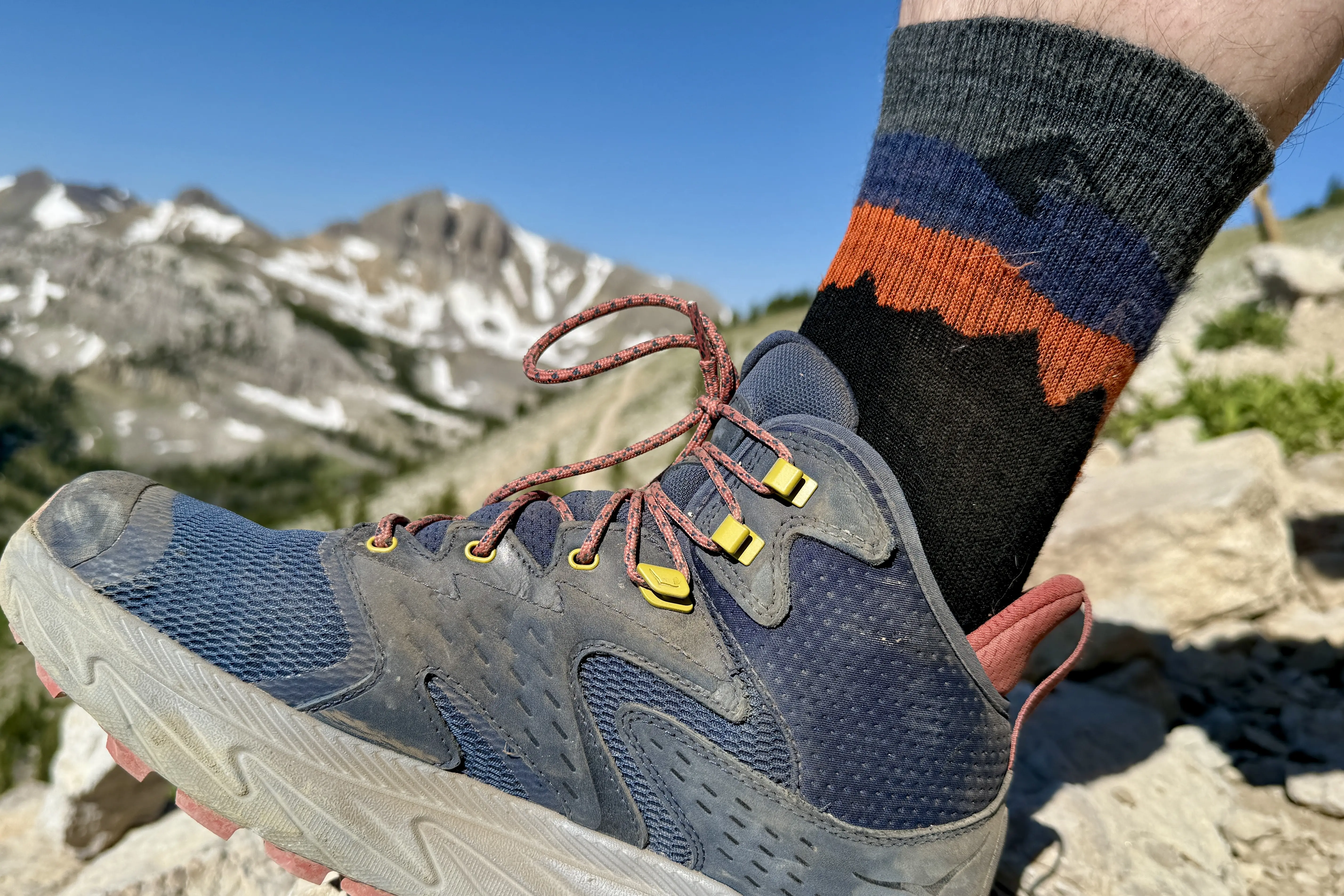

The Best Hiking Socks of 2025
Get ready to hit the trail with the best hiking socks from Darn Tough, Smartwool, and more!
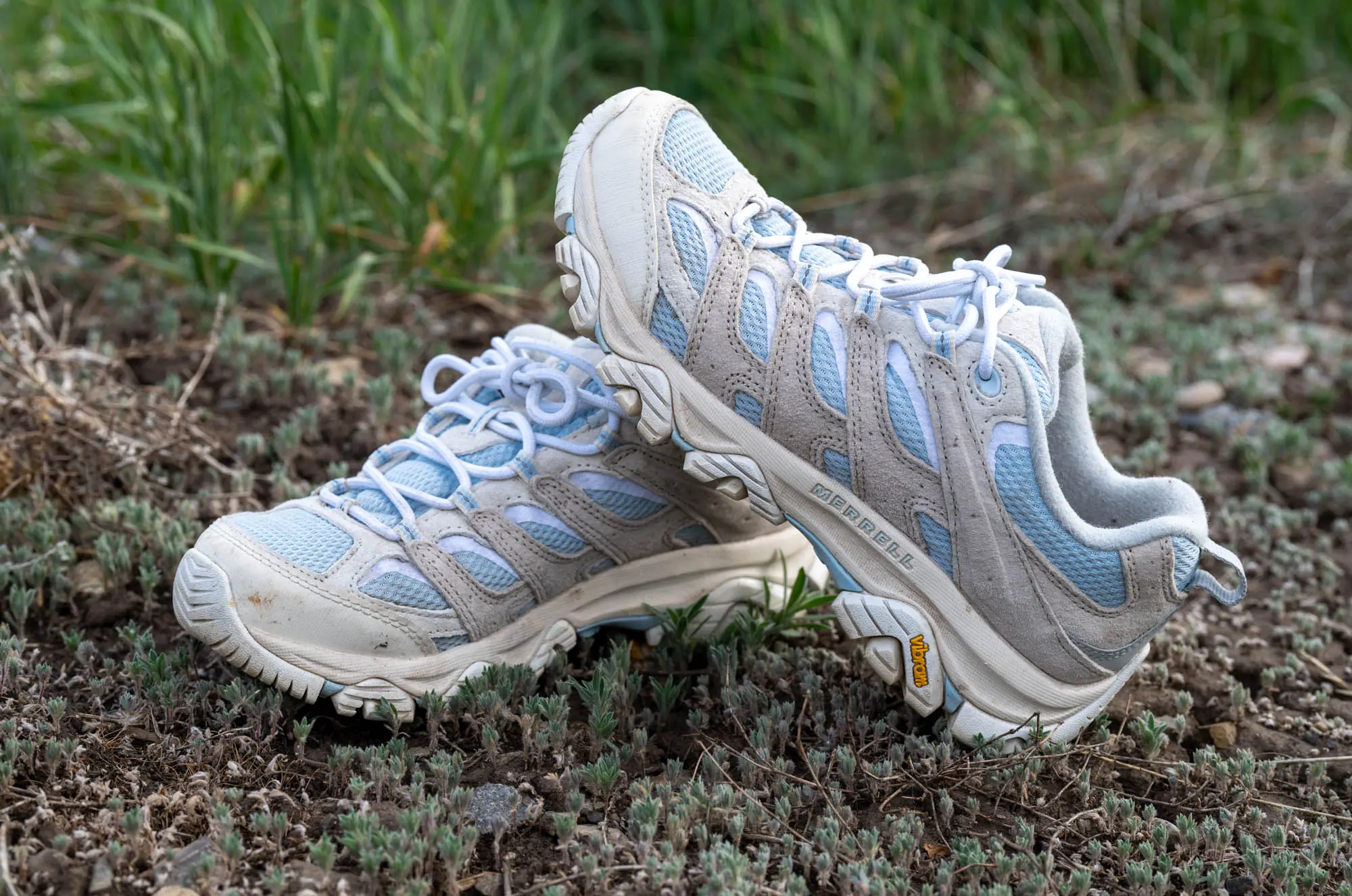

The Best Hiking Shoes for Women of 2025
We hit the trail and tested the best hiking shoes for women from Adidas, Merrell, Altra, La Sportiva, and more.
